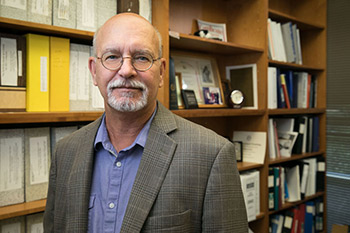amfAR Invests in “Next Generation” HIV Cure Intervention
New grant initiative seeks out novel ideas and technologies, borrows from cancer research
In November, amfAR awarded funding to researchers exploring an HIV cure approach that has previously shown promise in cancer therapy.
The only known cases of HIV cure to date occurred in people living with HIV—the Berlin and London patients—whose blood cancer was treated with a stem cell transplant. Both received stem cells from donors with a genetic mutation that left them with no functional CCR5 protein—the main gateway that enables most types of HIV to enter and infect cells.
“While we learned a great deal from these cases, it just isn’t possible to apply or adapt this type of procedure to cure everyone who’s living with HIV,” said amfAR Chief Executive Officer Kevin Robert Frost. “Though a number of different avenues are currently being pursued in the search for a cure, we sought research projects that could seed the next generation of potential interventions.”

Veteran HIV researcher and former amfAR grantee Jerome Zack, Ph.D., of the University of California, Los Angeles, will employ a new intervention attempting to rid the body of the persistent reservoir of HIV—the ultimate barrier to a cure. Dr. Zack and colleagues will use natural killer (NK) cells in an effort to eliminate cells harboring reservoir virus from the body. NK cells are the foot soldiers of the innate immune system, delivering an immediate and potent counterattack against infectious agents such as HIV.
These cells can be administered either in their naturally occurring form, or they can be engineered as CAR-NK cells to enhance their ability to kill their targets. To compare the ability of unaltered and CAR-NK cells to affect the rebound of virus when antiretroviral therapy is withdrawn, the researchers will employ several novel technologies developed by Dr. Zack. These include the insertion of a barcode into viruses so that the fate of each individual virus can be tracked, and use of a latency reversing agent developed in his lab.
“An important advantage of this approach is that CAR-NK cells—unlike CAR-T cells—have the potential to be designed for off-the-shelf use, vastly simplifying their broad application,” said Dr. Rowena Johnston, amfAR Vice President and Director of Research.
Share This:
